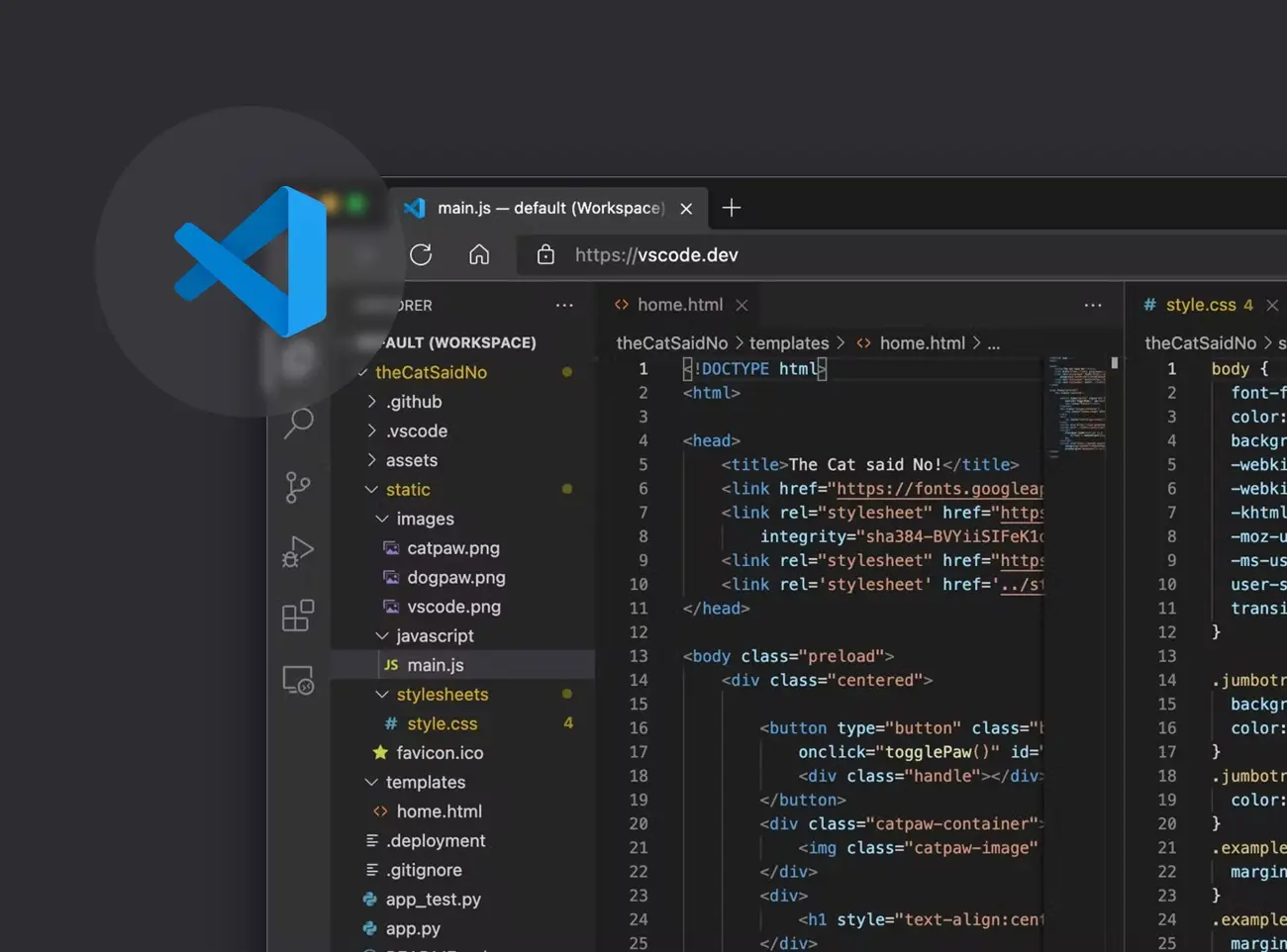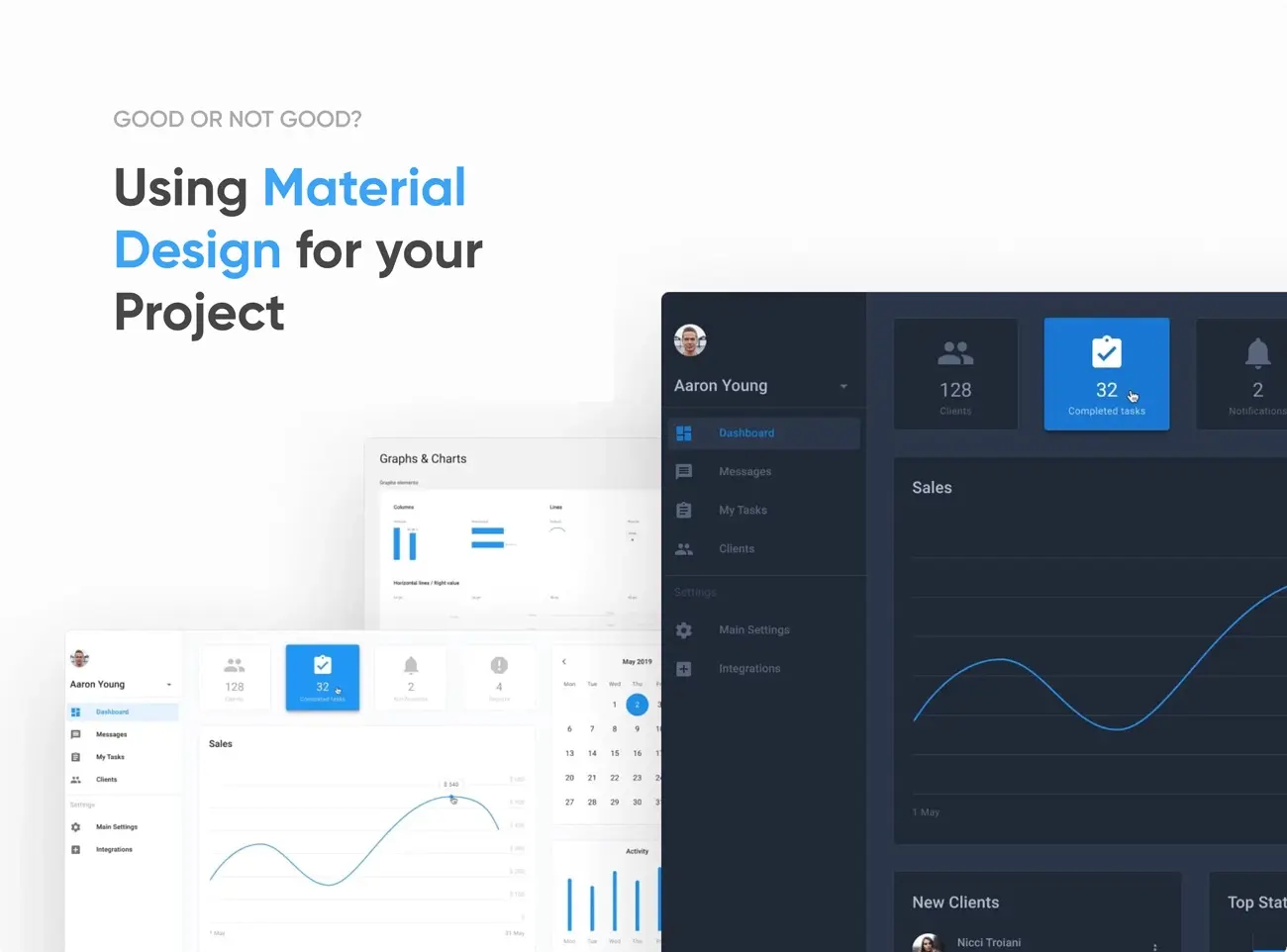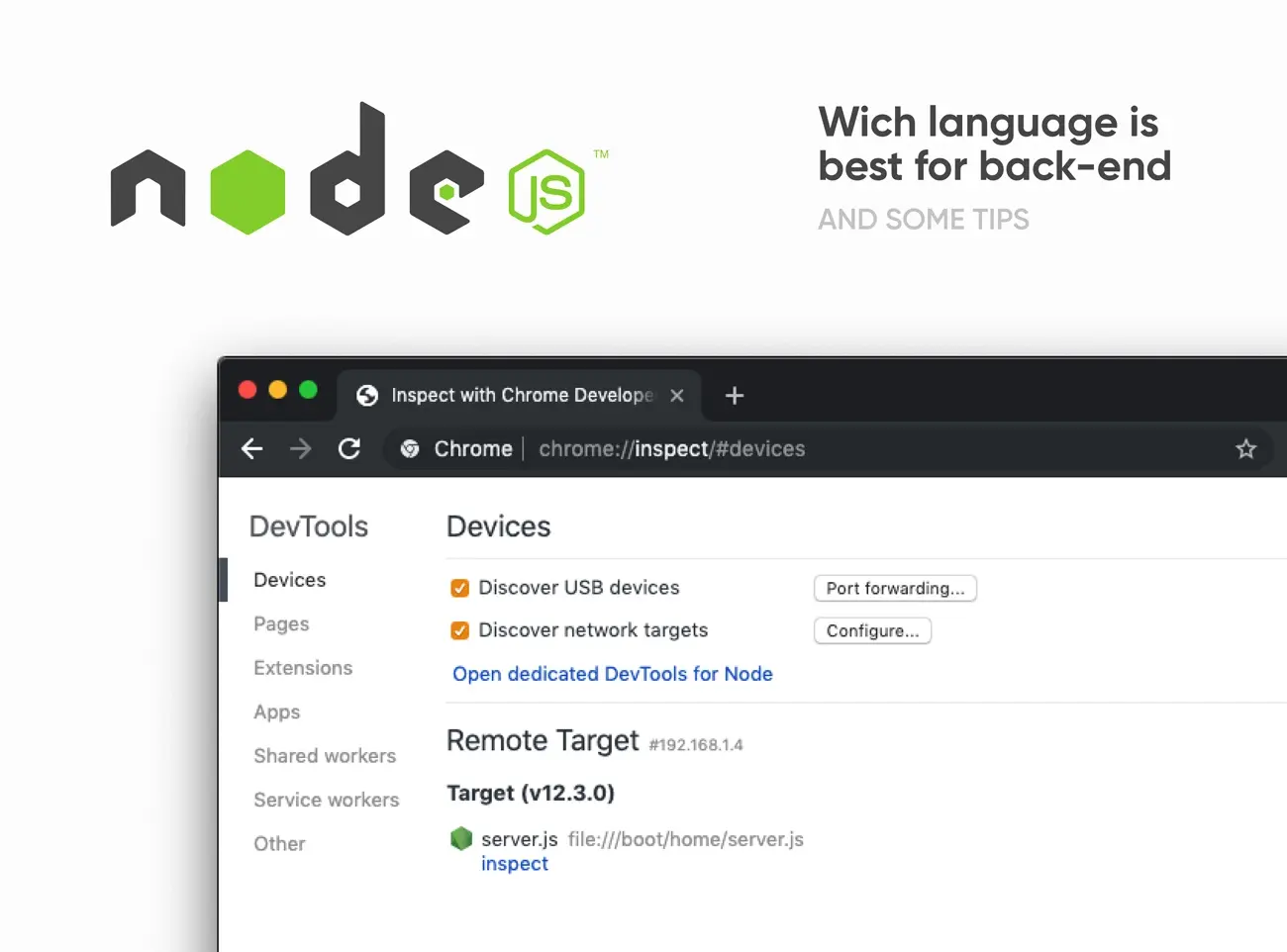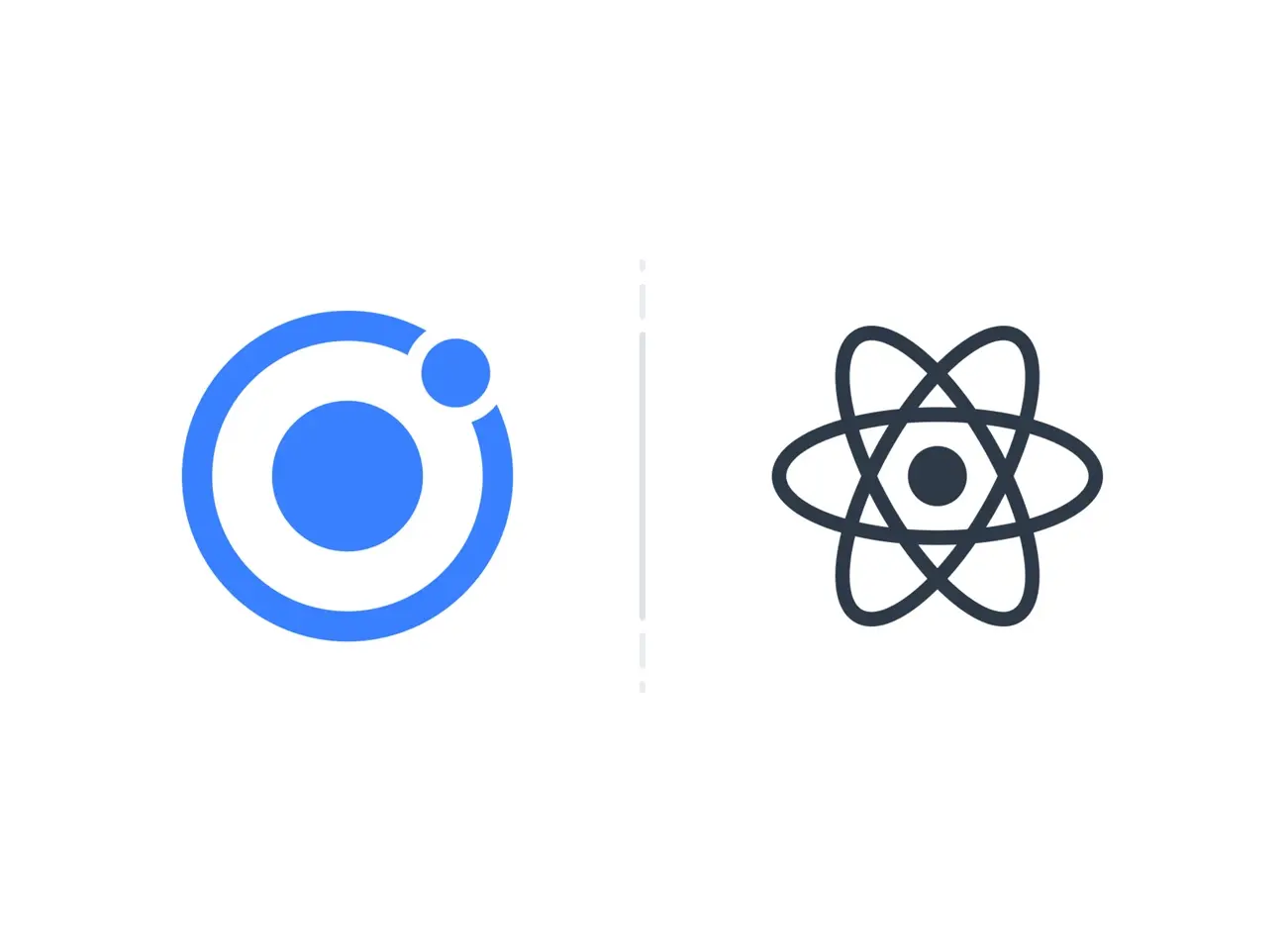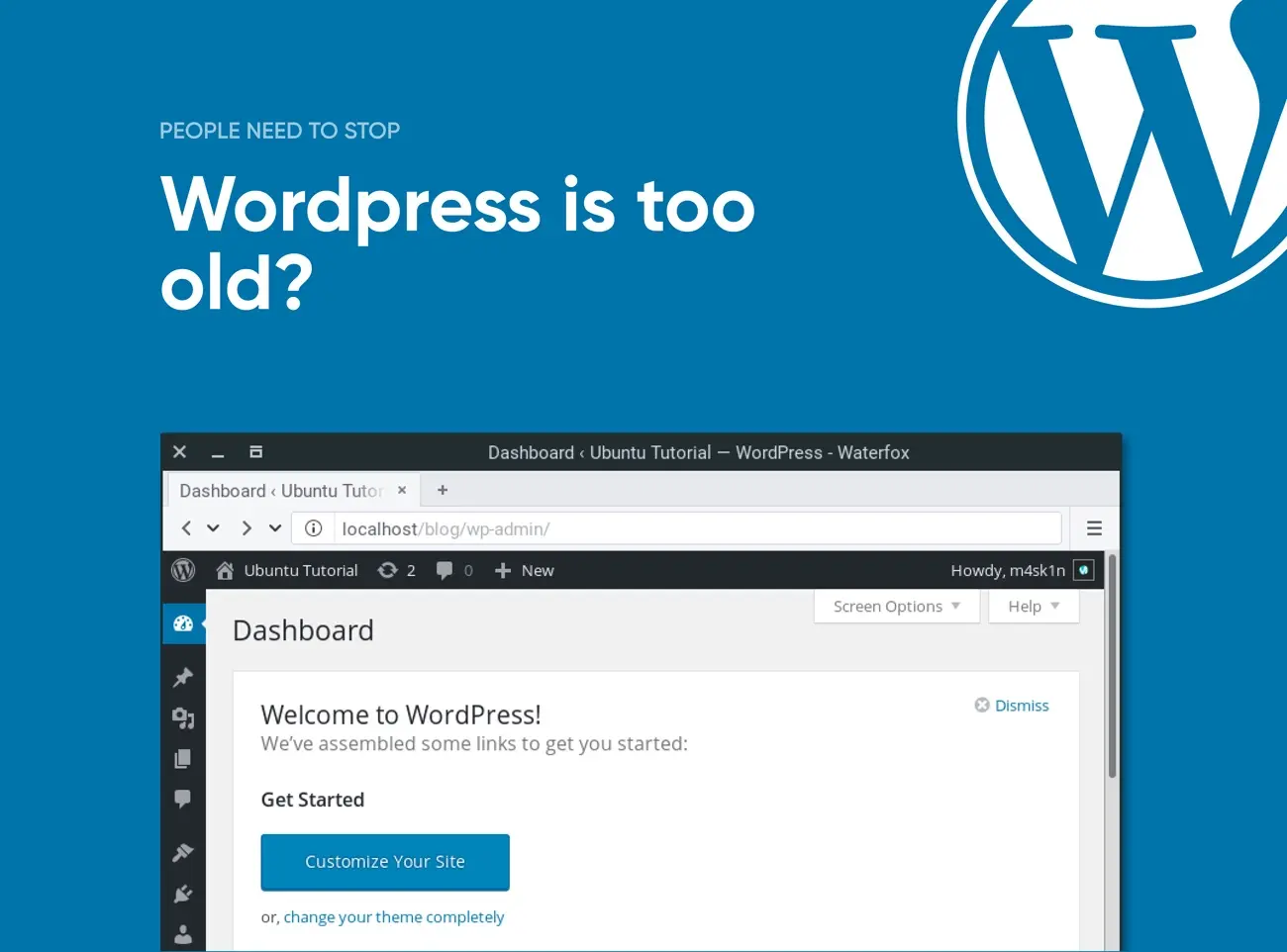Drag
Back-end · Nov 2022 · 15 MIN READ
Node.js is the Best Way to Build Web App
Every novel technology gains momentum and attracts attention in the beginning as startups are open to experimenting with new technologies at any given time, however we can see that big established organizations are shifting to Node.js from years of legacy systems. Developers know that a new “game-changing” technology paves way into the IT market every few months just to pass into extinction later but that is not the case with Node.js. This is rather unusual and to get a better understanding let’s deep dive into how Node.js works and why enterprises should adopt to this novel technology.

What Is Node.js?
Node.js was introduced in 2009 by engineer Ryan Dahl and sponsored by Joyent. It is a JavaScript runtime that allows developers to write server-side code for web pages, web applications, and command-line programs. The platform promotes the “JavaScript for Everything” paradigm, which involves using one language for both front-end and back-end development instead of using multiple languages.It is important to note that Node.js is not a separate programming language, but a platform for using JavaScript on the server-side. The language remains the same, but the set of APIs used differs between front-end and back-end development. In browser-based JavaScript, Web APIs are used to access the DOM and user interface of web pages and applications, while in server-side JavaScript, APIs provide access to the application's file system, http requests, and streams.In summary, Node.js is a technology for using JavaScript on the back-end and its features and development prospects can be found in the corresponding article.
Why use Node.js
Node.js is a powerful platform that offers many advantages for web application development. One of the most important benefits is its asynchrony and event-driven approach. Unlike threading, event-driven programming is triggered by external actions such as user input or network packets received by the program. This makes it easy to create interactive applications such as online chats, gaming apps, and interactive web services.The platform also has other advantages, such as the simple and widely-known JavaScript language. While Node.js has its own tools and features, such as its own libraries, it mostly uses the familiar syntax and features of JavaScript. Additionally, Node.js has a rich standard library and a vast selection of external libraries and ready-made modules available through the NPM package manager.Another advantage of Node.js is its use of the V8 engine, a high-performance JavaScript engine. This allows for faster interpretation of the language and makes it suitable for larger and more complex programs. The platform is also open-source and actively developed by thousands of programmers worldwide, with the Node.js foundation coordinating the work. All of these features make Node.js a versatile and constantly evolving platform, ideal for web application development.

How does Node.js Work?
Node.js is a powerful platform for web application development that utilizes a single thread to handle incoming requests from clients and send responses. However, to handle I/O operations or requests, Node.js uses the concept of threads. A thread is a sequence of instructions that the server needs to perform in order to provide information to multiple clients. Node.js is an event-loop, single-threaded language, which allows it to handle concurrent requests without blocking the thread for a single request.Node.js operates on two main concepts: Asynchronous programming and Non-blocking I/O. Non-blocking I/O means working with multiple requests without blocking the thread for a single request. I/O operations typically interact with external systems such as files and databases. Node.js is not suitable for CPU-intensive tasks, such as calculations or video processing, because a single thread cannot handle these types of workloads.Asynchronous programming, on the other hand, involves executing a callback function. When a response is received from another server or database, a callback function is executed. This is possible due to the event-driven architecture of Node.js. The single thread doesn't handle the request itself, instead it sends the request to another system to be resolved, allowing it to be available for another request.In order to handle requests, Node.js uses the concept of Libuv, an open-source library built in C. Libuv has a strong focus on asynchronous and I/O operations, which allows Node.js to access the underlying computer operating system, file system, and networking. Libuv implements two extremely important features of Node.js: the event loop and thread pool.The event loop is a single thread responsible for handling easy tasks like executing callbacks and network I/O. When a request is sent, it is placed into a queue called the event queue. The event loop picks up these events and calls the associated callback functions, and the response is sent to the client.Node.js also internally maintains a thread pool, although it is single-threaded. When non-blocking requests are accepted, they are processed in the event loop. But when accepting blocking requests, it checks for available threads in a thread pool, assigns a thread to the client's request, which is then processed and sent back to the event loop, and the response is sent to the respective client. The thread pool size can be changed by using the process.env.UV_THREADPOOL_SIZE = 1;.Node.js Cluster module enables the creation of multiple child processes (workers) that run simultaneously and share the same server port. Each child process has its own event loop, memory, and V8 instance, and communicates with the parent process through IPC (Inter-process communication). This allows for better handling of incoming requests by processing several requests simultaneously and avoiding standstills in the app. It also enables updating the app in production with little to no downtime by restarting workers one at a time. Incoming connections are distributed among child processes in a round-robin fashion by default, or by directly assigning a listen socket to interested workers.

Where to use Node.js?
Node.js is a great choice for certain types of projects due to its main features such as being data-driven, I/O-driven, event-driven, and non-blocking. One of the best use cases for Node.js is in web servers. The event-driven implementation can handle a large number of requests at a time using callbacks and the single-threaded and asynchronous features ensure that the server can serve a large number of requests without delay. Microservices architecture is well-suited for Node.js as it allows for asynchronous communication between microservices.However, web servers that implement computational-heavy or process-heavy tasks may not be the best fit for Node.js. Real-time applications such as chat, video conferencing, and online gaming also benefit from Node's ability to handle I/O-intensive tasks and its high scalability. Command-line applications and creating APIs are also common uses for Node.js, due to its simple syntax and the availability of packages for these purposes. Additionally, Node's ability to integrate well with NoSQL databases make it a good choice for creating API fronts for these databases.
Where not to use Node.js?
When developing applications, it is important to consider the specific needs and processes of the project. Node.js has many benefits and is well-suited for certain types of projects, but it may not be the best choice for others. For example, Node.js should not be used for:#1 CPU-heavy and complex applications: Node.js is not well-suited for tasks that require heavy computation and number crunching. Its event-based, non-blocking I/O architecture and single CPU can lead to blocking of incoming requests and slow performance.#2 Server-side web applications with relational databases: Node.js may not provide the best performance for web applications that involve a lot of CPU power and relational database operations. The relational DB tools for Node.js are still in beta, and other environments may be better suited for this type of project.#3 Simple CRUD applications: While Node.js can be used for simple CRUD applications, its performance and power may not be fully utilized in these types of projects. Other frameworks or environments may be more suitable for developing simple HTML applications.

Why is Node.js popular?
Node.js is a framework that has become increasingly popular among developers in recent years. It's predicted that by 2022, Node.js will power 60-70% of online apps, making it a crucial tool for development companies. One of the benefits of Node.js is that it is cost-effective and easy to learn. In this guide, we will explore the top Node.js trends for 2023 that are expected to lead the software industry.One trend that is gaining momentum is the use of GraphQL, a query language for graph databases. This allows developers to create API calls tailored to specific data requirements, making it a great option for quick iterations on the frontend. Another trend is the use of serverless architecture, which reduces costs and increases efficiency by eliminating the need for server maintenance. This is being adopted by companies such as Netflix and Reuters, and is predicted to generate $935.2 billion in revenue from app development.Another trend in Node.js development is the use of MEAN and MERN stacks, which are open-source web and app development frameworks that allow for the creation of complex applications and frontend web apps. These stacks are used by well-known companies such as Netflix and PayPal, and offer the advantage of not requiring code-switching between various frameworks.Real-time applications are also becoming increasingly popular, and Node.js is well-suited for this type of development. Real-time apps offer high user engagement and features such as live chats, social media integration, and stock market functionality. Node.js meets the standards of the ecosystem and can service hundreds of servers for data-intensive real-time apps.Overall, Node.js is a versatile and constantly evolving platform that offers many advantages for web application development. The trends outlined in this guide demonstrate the growing popularity of Node.js and its potential to revolutionize the way we build and interact with online applications.
Installing Node.js
In order to create an application using Node.Js, it is necessary to first install Node.Js on your Windows system. The following is a step-by-step explanation of the installation process.Step 1: Download the Installer. Go to the NodeJs official website and download the latest version of the Windows installer, which includes the NPM package manager. It is recommended to use the 64-bit version of the Node.js installer, specifically the LTS (Long-term Support) version.Step 2: Install Node.js and NPM. After double-clicking on the downloaded installer package, choose the desired location and click on the “Next” button. Make sure to select the npm package manager, and not the default Node.js runtime, to install both Node and NPM simultaneously.Step 3: Check Node.js and NPM Version. To verify that the installation was successful, open the Command Prompt and type “node -v” and “npm -v” to check the versions of Node and NPM. Keep in mind that these versions may be updated frequently.
“Node.js is a real opportunity to make it easier for developers to build high-performance applica- tions and get it running onto the web in a really scalable way to deliver value to end users.”
9 Amazing Node.js Website Examples
Given the long list of Node.js benefits, it's easy to believe that some of the biggest companies using the technology include NASA, Uber, and Twitter. Who uses Node.js, why did they decide to switch to Node.js and how did it turn out for them?#1 Netflix is a leading streaming content and video provider with over 93 million users worldwide. In 2015, the company faced challenges with its back-end technology, Java, as it struggled to keep up with the rapidly growing user base. This resulted in slow load times and limited options for custom UI design, negatively impacting the customer experience. To address these issues, Netflix switched to Node.js technology. This change brought significant benefits, including a 70% decrease in startup time, improved integration of microservices, and faster transition from backend to frontend development. The Netflix interface now loads in just a second, compared to the previous ten seconds, thanks to Node.js.#2 NASA is one of the world's most renowned organizations, known for its pioneering research and exploration. However, a near-fatal incident caused by inefficient data storage and long access times led NASA to re-evaluate its technology choices. The decision was made to move to Node.js, a JavaScript-based technology, in order to improve data storage and access. This change brought significant benefits for NASA, including a 300% reduction in access times, successful migration of old databases to the cloud, and a streamlined research process thanks to the reduced number of steps required for database management. With Node.js, information is now available to users in seconds, rather than hours.#3 Trello is a widely used project management tool that helps individuals and teams organize and prioritize their work. In order to deliver real-time updates and keep up with fast-paced project management, Trello chose to use Node.js on the server side. This choice was made because Node.js is able to handle multiple real-time server connections and keep updates flowing smoothly and on time. Node.js brought several benefits to Trello. It allowed for the creation of an extremely lightweight single page application, which is critical for a project management tool that needs to update information in real-time. Additionally, Node.js allows Trello to handle updates with zero delays, ensuring that information is always up-to-date. Additionally, the Node.js architecture has helped to reduce development and prototyping costs.#4 PayPal is a world leader in online payments and transfers with over 200 million active accounts. In 2013, the company faced challenges with its use of Java, which did not integrate well with front-end development. This resulted in long development times and poor performance. To address these issues, PayPal switched to Node.js. The use of Node.js brought several benefits for PayPal. A smaller development team was able to build a Node.js application in a shorter amount of time, while response time was reduced resulting in a 35% reduction in download time. Furthermore, the number of user requests per second doubled after the introduction of Node.js technology. This improved performance and faster development times helped PayPal to improve its user experience and continue to grow as a leading online payments platform.#5 LinkedIn is the largest social platform for business and employment, with a user base of 467 million people from more than 200 countries. In order to keep up with the platform's growing popularity, LinkedIn decided to switch from Ruby on Rails to Node.js. This decision was made due to synchronization issues with the Ruby application, which led to an increase in load time, especially during periods of high traffic. The switch to Node.js brought several benefits for LinkedIn. The entire architecture of the platform was created in JavaScript, simplifying the handling of client-server interactions. Additionally, the number of servers needed was reduced from thirty to three, doubling the traffic throughput. As a result, the new Node.js application runs ten times faster than the old version, providing a better experience for LinkedIn's users.#6 Uber is a rapidly growing company, with its user base expanding every six months and operating in 68 countries. As the number of connections and requests grew, Uber needed to create a real-time architecture to handle them effectively. Additionally, the company needed to perform complex analysis of data stored on the platform, which required uninterrupted service performance. To meet these demands, Uber has become one of the companies that use Node.js in production. Node.js brought several benefits for Uber. It allowed the company to process huge amounts of data and numerous user requests much faster, enabling the platform to serve 14 million rides daily. The technology also increased system connectivity and reduced management costs by creating more than 600 stateless endpoints. The ability to handle a large number of requests and perform complex data analysis in real-time, has helped Uber to continue growing as a leading ride-sharing platform.#7 Twitter, with over 80% of its account holders accessing the platform via smartphones, decided to create Twitter Lite, a minimalist application that can work even with a poor internet connection. Additionally, the website version of Twitter was not optimized for poor connection conditions. To address these issues, Twitter has become one of the companies that use Node.js. Node.js brought several benefits for Twitter. Twitter Lite takes up little space on mobile devices, from 1% to 3% of the phone's memory, which is convenient for users with limited storage. The app can also work with 3G and 2G connections, making it accessible for users in areas with poor internet connectivity. Furthermore, support costs for Twitter Lite are significantly lower than for Twitter Desktop, making it more cost-efficient for the company. These improvements have helped Twitter to better serve its mobile users and continue to grow as a leading social media platform.#8 eBay is another business that has adopted Node.js. As the largest marketplace providing C2C and B2C online sales services, with 183 million users, eBay needed a technology that could keep up with the high traffic and changes in the front-end. In the past, the eBay application ran on Java, resulting in long loading times and poor performance. To address these issues, eBay decided to use Node.js. With Node.js, eBay was able to create microservices that run in real-time, without overloading the infrastructure. Node.js also provided scalability, speed, and the ability to handle a high volume of traffic, which is critical for a platform like eBay. These improvements have helped eBay to better serve its users and continue to grow as a leading online marketplace.#9 Medium is a well-known online publishing platform with 85 million users, using Node.js as its technology choice. As the platform grew, hitting 7.5 million posts in 2016, the Medium team realized the need to manage big data without overburdening their servers. Additionally, the company had to meet the ever-increasing requirements of text editors for publishing posts. To address these challenges, Medium adopted Node.js. The technology brought several benefits to the platform. Thanks to Node.js, even pages with large images and bulky content load in 2.7 seconds, improving the user experience. Additionally, Node.js has accelerated deployment times, allowing Medium to quickly and efficiently publish new content and keep up with the demands of its users. With Node.js, Medium has been able to handle big data and improve the user experience, making it a leading platform for online publishing.

Conclusion
In conclusion, Node.js is a backend technology or server-side application that you can use to run JavaScript code. It has many benefits, such as being scalable and fast when using on the front end of your applications.It also doesn't require any object-oriented programming. Thus, making it easy to enter into coding in general since you'll only have one language at your disposal.If you're interested in full-scale cloud infrastructures, get in touch with us, and we will happily accommodate your pressing needs.

